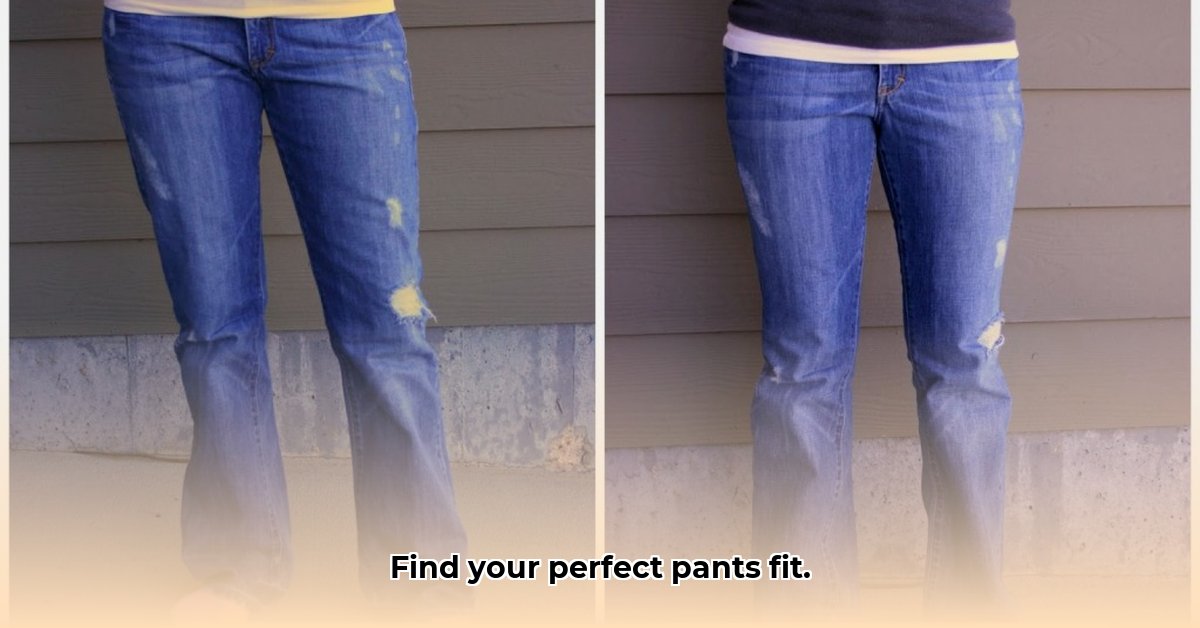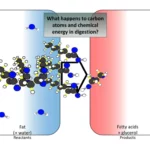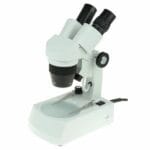Ever wondered what makes a great pair of pants? It’s more than just fabric and stitching! This guide breaks down everything you need to know about how pants are made, from the initial design to the final product. We’ll cover all the important parts, explain how they work together, and share tips and tricks to help you understand—and even create—better pants. Whether you’re a designer, a maker, or just someone who appreciates a well-made pair of trousers, this guide will give you a new appreciation for the craft.
Parts of Pants: A Perfect Fit Guide
Let’s dive into the world of pants! Understanding their different parts is key to creating, buying, or even just appreciating a great pair. It’s like learning the anatomy of a well-made garment. We’ll break down the essentials so you can confidently talk about, design, or choose pants that fit like a dream, ensuring comfortable fit.
Decoding the Essentials: The Core Components of Your Pants – Key Elements
Think of pants like a puzzle—several pieces work together to create the whole picture. The most basic components form the foundation of any pair of pants, no matter the style. These fundamental parts come together to give pants their shape and fit. Let’s start with the big six to ensure your pants are a perfect fit:
- The Waistband: The waistband is the strip of fabric that encircles the upper edge of the pants, designed to sit snugly around the wearer’s waist. It often incorporates features like belt loops, a button, and a zipper (or other fastening mechanisms) to secure the pants in place. The width, style, and construction of the waistband significantly influence the overall fit, comfort, and style of the pants.
- Crucial Insight: A well-constructed waistband provides support without feeling constricting, allowing for freedom of movement. A poorly designed waistband can dig in or cause discomfort, impacting the wearer’s experience negatively. Different waistband styles, such as standard waistbands with button and zipper closures, elasticized waistbands for added flexibility, and contoured waistbands shaped to fit the body’s natural curves, cater to various preferences and needs.
- The Inseam: The inseam is the seam that runs along the inside of the pant leg, from the crotch to the hem. Its length is a crucial factor in determining how well the pants fit, influencing the overall drape and appearance. The inseam measurement determines where the hem of the pants will fall on the wearer’s leg.
- Crucial Insight: When determining the inseam, it’s essential to consider measurement techniques and fit considerations to ensure the pants are tailored to your body. Lighter materials like cotton or linen are great for a casual, summery vibe, while wool or heavier fabrics can be ideal for a more formal or winter look. Styling options include cuffing the pants for a trendy touch or opting for a classic straight-leg fit for a timeless appearance.
- The Outseam: The outseam is the seam that runs along the outside of the pant leg, from the waistband to the hem. This seam plays an important role in defining the overall silhouette and fit of the pants.
- Crucial Insight: The outseam provides structural support to the pants, helping them maintain their shape and drape properly on the body. Understanding the outseam and its differences from the inseam can help you appreciate the craftsmanship of your pants even more, contributing to the overall aesthetic of your pants.
- The Crotch Seam: The crotch is the area where the legs of the pants intersect, a critical point for comfort and mobility. Its design varies based on the style of the pants (e.g., high-rise, low-rise).
- Crucial Insight: The crotch seam directly impacts the movement and comfort of the pants. The crotch depth, measured from the front waistband through the crotch and up to the back waistband (also referred to as the rise), is crucial for ensuring a comfortable fit. A poorly constructed crotch seam will severely impede your movement and likely cause discomfort. The crotch extension, a measurement added to the pattern pieces to cover the inner thigh, influences how the pants fit around the lower torso.
- The Fly Front: The fly front is the front opening of the pants, typically containing a zipper or buttons. It allows the wearer to easily put on and take off the pants.
- Crucial Insight: The fly is usually reinforced with a placket, a piece of fabric that covers the zipper or buttons for a cleaner look. The length of the fly from the top of the waistband to the bottom of the opening is an important measurement to ensure a perfect fit. The zipper or button shank length should match this measurement.
- Pockets: Pockets are essential features for both functionality and style. Common types of pockets found on pants include front pockets (typically located on the sides of the pants near the hips), back pockets (positioned on the rear of the pants), and coin pockets (a small pocket within a front pocket, originally designed to hold coins).
- Crucial Insight: Pockets aren’t only for storage but also for accessibility. They allow you to conveniently carry items like keys, phones, or wallets without the need for an extra bag. The design and placement of pockets can significantly impact the overall look of the pants. The width and depth of each pocket should be measured to ensure they are functional and meet design specifications.
Beyond the Basics: Adding Detail and Personality – Customizing Pants
Once we have the fundamental components, we can look at the details that truly set a pair of pants apart. These extra details show the quality and care put into the designs and the design elements.
- Cuffs/Hems: The hem is the bottom edge of the pant legs, which can be finished in various ways, including being folded and sewn to prevent fraying, or left raw for a more rugged look. Cuff styles can greatly impact the overall look of your pants.
- Crucial Insight: When it comes to cuff styles, there are a few popular choices to consider such as straight, turn-up, french and notched. Remember that cuff alterations can significantly impact the overall appearance and fit of your pants, so it’s crucial to communicate your preferences clearly to the tailor.
- Belt Loops: Belt loops are small loops of fabric sewn at intervals around the waistband. They are designed to hold a belt in place, providing additional support to keep the pants securely on the waist.
- Crucial Insight: Belt loops aren’t just functional; they’re also a key styling element for your pants. More belt loops provide better support for your belt, preventing it from slipping or twisting. Additionally, different belt loop sizes can accommodate various belt widths, so be sure to choose a belt that matches the size of your loops for a polished look.
- Stitching: The type of stitching, from the seams to the decorative details, contributes to the overall look and durability of the pants. Different stitching styles can show craftsmanship and add to the aesthetic.
The Power of Measurement: Getting the Perfect Fit
Before you even think about sewing or buying pants, accurate measurements are essential. Knowing your waist and inseam is a start, but it certainly isn’t enough for a perfect fit. Consider these additional measurements to find the perfect fit from the pattern:
- Hip Circumference: Measures around the fullest part of your hips.
- Rise: The distance from the crotch to the waistband (important for determining how high or low the pants sit).
- Thigh Circumference: Measures around the thickest part of your thigh.
Getting these measurements correct dramatically increases the chances of getting pants that fit well. A tailor’s tape measure is your best friend here. It is probably better to get these measurements taken by someone else to ensure accuracy. Using a well-fitting pair of pants as a reference guide can help you ensure you’re measuring correctly.
From Pattern to Perfection: The Assembly of Your Pants
The process of putting together all the parts is a beautiful dance of precision and skill. While a full step-by-step guide is a project for another day, we can share some key things to remember:
-
Seam: The line where two pieces of fabric are sewn together.
-
Stitching: The technique used to join fabrics with a needle and thread. Common types of stitching in pants include straight stitch, topstitching, and overlock stitch.
-
Darts: Tapered folds sewn into the fabric to provide shape, commonly found in the waistband area.
-
Gusset: A piece of fabric inserted into a seam to provide extra room or reinforce a point of strain, often used in the crotch area for added comfort and durability.
Mastering these details will help you create, buy, or appreciate the art of well-fitting pants. Remember, it’s the attention to every part, big and small, that makes the difference between just pants and perfect pants.
How to Improve Pant Fit Using PLM Software
Let’s face it: getting the perfect pant fit is a challenge. But what if I told you technology could help? Product Lifecycle Management (PLM) software is revolutionizing apparel manufacturing, and understanding how it can improve pant fit is key. But what makes the difference in a pair of pants using PLM?
Understanding Pant Construction: A Foundation for Fit – Critical Roles
Before diving into PLM, let’s review pant anatomy. Think of pants as a puzzle; each piece – waistband, yoke, fly front,
- Unlock Umami’s Savory Secret: The Science of Deliciousness - July 30, 2025
- Discover How the Columbian Exchange Reshaped Global Cuisine - July 30, 2025
- Unlocking the Placebo Effect: How Your Brain Can Heal Your Body: New Insights - July 30, 2025
















